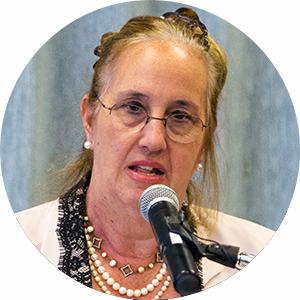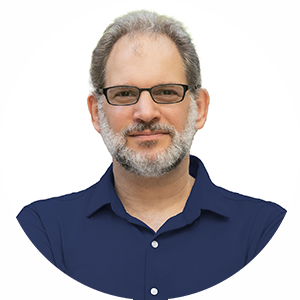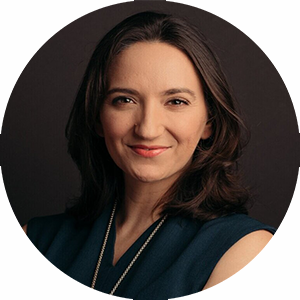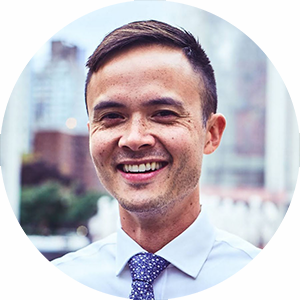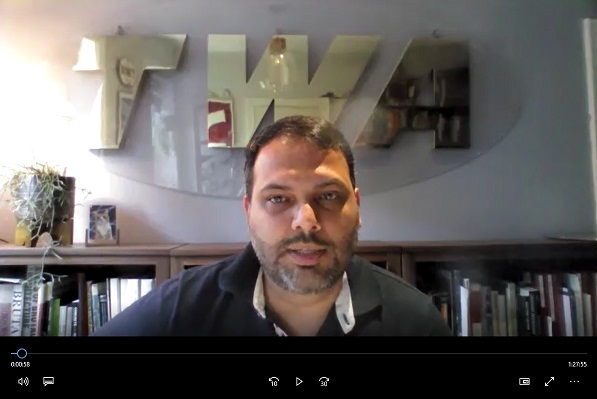DISTRICT 6 CITY COUNCIL ELECTION 2021

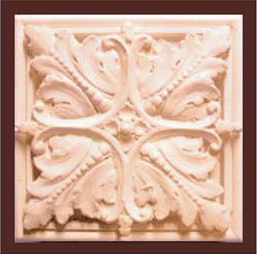
The WEST END PRESERVATION SOCIETY and LANDMARK WEST! share our District 6 Candidates with you! There are six candidates running or this district seat. We reached out to each campaign with the same survey. Not all candidates chose to respond by the deadline. Late responses will be added as they are received. Read the responses from those who participated via the tabs below, or visit each campaign (arranged alphabetically) to learn more about the candidates directly. VIEW VIDEO FROM MAY 12 CANDIDATES FORUM
We asked Candidates the following questions in RED. Tab through by name to read each candidate’s responses.
– Do you believe historic preservation is important to New York City?
Please explain your answer.
– Do you have a favorite landmark or historic district?
Please explain your answer.
– Name a preservation effort in which you have been involved and briefly describe your role.
– Are there particular buildings and/or neighborhoods that Landmarks Preservation Commission should prioritize for designation?
Please explain your answer.
– I believe the following about New York City’s landmarks and historic districts:
__ There are currently too many landmarks and historic districts
__ There are currently enough landmarks and historic districts
__ There are currently too few landmarks and historic districts
– What percentage of New York City’s buildings are landmarks or within historic districts?
__ ~5%
__ ~10%
__ ~25%
__ Other…
– Do you believe in the public purpose of landmark designation even if the owner objects?
__ Yes
__ No
Please explain your answer.
We asked Candidates the following questions in RED. Here are Gale Brewer‘s Responses:
– Do you believe historic preservation is important to New York City? YES
Please explain your answer. Historic preservation is important to New York City because it makes our city an even better place to live and work; landmarking has a positive impact on our economy, tourism, and quality of life. Preservation provides a reassuring chain of continuity between past and present, though there is a challenge to develop a new generation of preservationists who will take responsibility for even more of the City’s cityscape. I cannot imagine how much of the built environment and the beauty of the 5 boroughs would have been destroyed if Mayor Robert Wagner had not signed New York City’s Landmarks Law in 1965.
– Do you have a favorite landmark or historic district? YES
Please explain your answer. Grand Central Station is a favorite landmark for its unsurpassed grandeur and its role in establishing the city’s power to protect private property through landmark designation. My favorite historic district is the Central Park West Historic District where I reside because of its beauty and because it typifies the importance of such districts in protecting the quality of life by creating permanent islands of stability in areas surrounded by large scale development.
– Name a preservation effort in which you have been involved and briefly describe your role. As the Council Member, I was the leader in a successful community-based effort to landmark West Park Presbyterian Church at 86 Street and Amsterdam Avenue despite huge opposition from religious leaders citywide and developers. I was also one of the leaders to designate West End Avenue as an historic district. This unique ensemble of early 20th century apartment houses is not only a principal source for the middle class stability of the Upper West Side, but it shows the value of landmarks in preserving both aesthetic heritage and property values.
– Are there particular buildings and/or neighborhoods that Landmarks Preservation Commission should prioritize for designation? YES
Please explain your answer. 857 Riverside Drive should be preserved and restored because of its historic and cultural importance as the home of a notable abolitionist and possible stop on the Underground Railroad. The surrounding area of Washington Heights and Harlem contain many other sites of equal importance on which we should continue to focus until they are preserved.
– I believe the following about New York City’s landmarks and historic districts:
__ There are currently too many landmarks and historic districts
__ There are currently enough landmarks and historic districts
X_ There are currently too few landmarks and historic districts
– What percentage of New York City’s buildings are landmarks or within historic districts?
X ~5%
__ ~10%
__ ~25%
__ Other…
– Do you believe in the public purpose of landmark designation even if the owner objects?
X_ Yes
__ No
Please explain your answer. In instances of advocating for designation at West Park Presbyterian Church and for West End Avenue, there was great opposition but we succeeded in showing that to preserve the city’s landmarks and create a living physical legacy historic and cultural values must sometimes prevail over individual interests.
We asked Candidates the following questions in RED. Here are Maria Danzilo‘s Responses:
– Do you believe historic preservation is important to New York City? YES
Please explain your answer. Our history is reflected in the architecture of many of our buildings, from who lived in these buildings to the people who designed them. Most were designed and built by immigrants from Europe, many of Jewish descent. Landmarked buildings have history, and provide a draw for tourists; as we reopen and rebuild our economy, rebuilding the tourism sector will be critical to bringing back many lost jobs, and bringing our City back to health. Landmarks are a critical component of this process. Whatsmore, landmark buildings are generally in keeping with the height of buildings surrounding them. This allows much of the neighborhood to keep access to sunlight, and especially limits excess shadow cast over greenspaces, for all to enjoy.
– Do you have a favorite landmark or historic district? YES
Please explain your answer. My favorite landmark would be the Beredsford on 81st and Central Park West. Its construction in the 1920s by Emery Roth, an Austro-Hungrian immigrant who contributed to many now landmarked UWS (and Citywide) projects, epitomises our history and the valuable contributions immigrants have left on our City. Highlighting stories such as these are critical to help revitalize much of our city. My favorite district would be the Upper West Side/Central Park West Historic District (as I live in it), but the Riverside-West End Historic District is a close second. The Upper West Side, its architecture is diverse and interesting, from its brownstones to majestic buildings along the Avenues especially on Central Park West, West End and Riverside. Our ambitious architects in the late 1800’s and early 1900’s were inspired by European palaces as well as by our local raw materials. They are a conglomeration of everything that makes NYC and the UWS unique and special, and one of the biggest reasons I have chosen to call the UWS home for 40 years. Every day, as I walk my dog Willow, I stop to admire the architectural details on so many of our buildings, many of which are right down the block from me. The ornate upper portions of many buildings were intended to be admired from afar. The Upper West Side is a jewel.
– Name a preservation effort in which you have been involved and briefly describe your role. I have started to get involved in the ABC site. This particular site is key as the buildings that are developed will set a new standard for the UWS. I have been meeting with community groups and many neighbors that feel a strong sense of urgency that we get this project right. We can’t afford to lose any more to developers than we already have. Allowing supertall towers to be developed once ABC vacates will severely damage the character of the neighborhood and hurt the cultural history that Lincoln Center has come to represent, block out sunlight over the surrounding green spaces (I am fervently against this), and hamper quality of life as construction endlessly persists for surrounding residents (especially in the face of any litigation as we saw with 200 Amsterdam). Supporting Landmark West’s rezoning proposal, and working further with zoning experts to ensure that there are no loopholes that would allow supertall development on these campuses is one of my top priorities once in office. I have been a supporter of the Central Park Conservancy for many years and was on the women’s committee. The work we do to preserve the park has been extremely important. Pictures from the park before the CPC was established show just how critical their role has been in preserving the park and making it a safe, clean place for families, seniors and everyone to enjoy time outdoors.
– Are there particular buildings and/or neighborhoods that Landmarks Preservation Commission should prioritize for designation? YES
Please explain your answer. The Ballet Hispanico has been one of the leading cultural institutions for the Upper West Side, where families have been able to bring their children to learn so many types of dance. The set of buildings are a reminder of our history when horses were the prevailing mode of transportation before cars, and are a model for how we can preserve the neighborhood’s history while facilitating important arts and cultural programming for our children. These buildings are low and provide beautiful light for everyone to enjoy. For so many I know the buildings bring a sense of nostalgia and keep them tied to the neighborhood. This is especially critical in our current climate, when for so many leaving the City feels like the easier or necessary move, fostering this sense of community and nostalgia around our most valued cultural institutions can act as an anchor that will keep families and lifelong residents living on the UWS. I was also so happy to read that the Landmarks Preservation Commission designated the IRT Powerhouse before it was too late. We could easily see how that particular site could have fallen victim to a large developer like so many in the area. I would like to see more preservation in the West 50’s where New York’s history was particularly relevant to immigrants. Although I have not identified specific buildings, I would love to discover more about the preservation work that could take place in that area, especially within District 6.
– I believe the following about New York City’s landmarks and historic districts:
__ There are currently too many landmarks and historic districts
__ There are currently enough landmarks and historic districts
X_ There are currently too few landmarks and historic districts
– What percentage of New York City’s buildings are landmarks or within historic districts?
X ~5%
__ ~10%
__ ~25%
__ Other…
– Do you believe in the public purpose of landmark designation even if the owner objects?
X_ Yes
__ No
Please explain your answer. Yes but in certain cases the city has to help the owners with preservation work costs as well as resources. For some owners the honor of a heritage designation comes with high costs of repair and can endanger our already tenuous stock of affordable housing. If small property owners are designated as a landmark, and they are subsequently forced to sell due to financial constraints and difficulties making repairs, we could end up seeing many of these buildings get converted by luxury developers to single family units. Generally these developers have better access to legal experts who can navigate the loopholes around the landmarking process and can tie up properties in court cases for years on end, effectively resulting in vacant properties that hamper the character of the neighborhood and can result in quality of life issues for surrounding buildings. We must therefore ensure proper supports are in place for small property owners to ensure they can continue to be the responsible and good landlords that many currently are. We cannot risk pricing them out, resulting in more luxury developers gaining hold of properties.
We asked Candidates the following questions in RED. Here are David Gold‘s Responses:
– Do you believe historic preservation is important to New York City? YES
Please explain your answer. Historic preservation is critical to maintaining the distinctive character of the Upper West Side and other neighborhoods in the City.
– Do you have a favorite landmark or historic district? NO
Please explain your answer. There are so many wonderful buildings and districts in the City that I could not single out any one. One of my wife’s and my favorite ways to spend a Saturday afternoon is to take an architectural guidebook on a self-guided walking tour of a New York City neighborhood. We like to do this in neighborhoods we know well, as well as those we don’t. During the pandemic, we mostly stayed close to home, and so we walked the streets of the UWS with the AIA guide in hand. Although we both grew up in the neighborhood, and every block of it feels like home, we still learned a lot and gained a new appreciation for familiar spots.
– Name a preservation effort in which you have been involved and briefly describe your role. N/A
– Are there particular buildings and/or neighborhoods that Landmarks Preservation Commission should prioritize for designation? YES
Please explain your answer. The boundaries of the Special Lincoln Square District should be extended to include the properties ABC is vacating.
– I believe the following about New York City’s landmarks and historic districts:
__ There are currently too many landmarks and historic districts
__ There are currently enough landmarks and historic districts
X_ There are currently too few landmarks and historic districts
– What percentage of New York City’s buildings are landmarks or within historic districts?
X ~5%
__ ~10%
__ ~25%
__ Other…
– Do you believe in the public purpose of landmark designation even if the owner objects?
X_ Yes
__ No
Please explain your answer. N/A
We asked Candidates the following questions in RED. Here are Sara Lind‘s Responses:
– Do you believe historic preservation is important to New York City? YES
Please explain your answer. I am supportive of historic preservation, but we must balance it with the need for the continued growth of the city.
– Do you have a favorite landmark or historic district? YES
Please explain your answer. I live across from West Park Church and I adore that it’s part of my view. It’s great how the church has evolved to become a performance and rehearsal space – we need to get creative with new uses in spaces like that.
– Name a preservation effort in which you have been involved and briefly describe your role. I have not been involved in any preservation efforts, but I serve on the Community Board and so have been involved in many landmarks votes.
– Are there particular buildings and/or neighborhoods that Landmarks Preservation Commission should prioritize for designation? YES
Please explain your answer. I would like to see LPC focus on designating significant historic buildings in black communities, for example buildings that played a role in the Underground Railroad and buildings involved in the Harlem Renaissance. I would also support landmarking Lincoln Center.
– I believe the following about New York City’s landmarks and historic districts:
__ There are currently too many landmarks and historic districts
X There are currently enough landmarks and historic districts
__ There are currently too few landmarks and historic districts
– What percentage of New York City’s buildings are landmarks or within historic districts?
X ~5%
__ ~10%
__ ~25%
__ Other…
– Do you believe in the public purpose of landmark designation even if the owner objects?
X_ Yes
__ No
Please explain your answer. I would note that while the city as a whole has a relatively low percentage of buildings that are landmarked or within historic districts, the UWS in particular is home to a disproportionate number of those buildings, including large historic districts. As mentioned above, I would like LPC to focus on designating buildings in other neighborhoods that have historically been ignored.
Awaiting response.
Awaiting response.
We asked Candidates the following questions in RED. Tab through by name to read each candidate’s responses.
– Have you ever opposed a landmark or historic district designation?
__ Yes
__ No
If so, which one(s)?
If not, under which circumstances would you be in opposition?
– Have you ever supported a landmark or historic district designation?
__ Yes
__ No
If so, which one(s)
If not, under which circumstances would you be in support?
– Do you think historic preservation has a positive impact on the economy and quality of life in New York City?
__ Yes
__ No
Please explain your answer.
– Would you commit to prioritizing rehabilitation and reuse of historic builidngs for new publicly-sponsored projects such as libraries, schools and senior and affordable housing?
__ Yes
__ No
Please explain your answer.
– Do you believe that there are ways to build new affordable housing and increase equity in our city without upzoning existing residential neighborhoods?
__ Yes
__ No
How would you approach balancing these important goals?
– Do you believe historic preservation and affordable housing goals can work together?
__ Yes
__ NO
Please explain your answer.
We asked Candidates the following questions in RED. Here are Gale Brewer‘s responses.
– Have you ever opposed a landmark or historic district designation?
__ Yes
X No
If so, which one(s)? N/A
If not, under which circumstances would you be in opposition?
– Have you ever supported a landmark or historic district designation?
X_ Yes
__ No
If so, which one(s) In my role as Council Member and Borough President, I have supported hundreds of landmark initiatives. I mentioned two above and in addition I have made other efforts as Borough President. In 2019, I advocated successfully for the Central Harlem Historic District, and fought back a proposal for an owner to take out a portion of the district for a development scheme. I was part of a coalition that tried to protect 316 Fifth Avenue across from the Empire State Building but we were not successful. In 2017, I supported landmark designation for Washington Heights Rowhouses at 626-648 West 158 Street. We were not successful at the Landmarks Preservation Commission (LPC) but we are trying again as part of the focus on 857 Riverside Drive, which is in the area that could be designated historic. As the Chair of our Manhattan Borough President Task Force on Religious Facilities, we held hearings and meetings with a large group of stakeholders for 2 years to develop support for the faith-based institutions that own buildings and face real estate challenges. The resulting “Land Use & Zoning Action Book for Religious Facilities” has been praised as a source of information not available anywhere else. I hope faith-based leaders chose to keep and maintain their building, and that this document helps them to do so. In 2015-2016, I took the lead on making sure that the LPC gives advocates time to review the backlog and other items on the calendar, and we were successful in these efforts.
If not, under which circumstances would you be in support? N/A
– Do you think historic preservation has a positive impact on the economy and quality of life in New York City?
X_ Yes
__ No
Please explain your answer. Landmarks benefit the city by 1. Preserving its physical history 2. Acting as a social and cultural anchor for communities 3. Enhancing the economic value of surrounding property
– Would you commit to prioritizing rehabilitation and reuse of historic builidngs for new publicly-sponsored projects such as libraries, schools and senior and affordable housing?
X_ Yes
__ No
Please explain your answer. Adaptive re-use is a proven and responsible tool to conserve the appearance as well as the continuity of historic structures.
– Do you believe that there are ways to build new affordable housing and increase equity in our city without upzoning existing residential neighborhoods?
X_ Yes
__ No
How would you approach balancing these important goals? Morningside Heights Re-Zoning proposal is attempting to balance these goals now. A coalition—made up of residents, businesses, and local groups—has identified more than 20 sites spanning 110th to 125th streets from Riverside to Morningside parks that could see major new development because of unused air rights or high vacancy rates. Without new zoning, projects there don’t have to include affordable units, but a new community-driven vision to retool the neighborhood’s byzantine zoning would change that. In East Midtown, we were successful in mandating that if the re-zoning was to be approved, it must include a list of buildings that must be landmarked. We were successful in designating many of them as part of the re-zoning, and new buildings are mandated to help pay for the upkeep of the landmarks, especially the churches and synagogues but could include affordable housing that is landmarked as well.
– Do you believe historic preservation and affordable housing goals can work together?
X_ Yes
__ No
Please explain your answer. Communities have to plan for their area, including where areas could be up zoned for taller buildings but where historic preservation would not be impacted. I also believe that the City has to support more than 25% affordable which is what the MIH calls for; Sec 8 or tax incentives should be part of any new residential structures that are slated for a zoning change. If the laws allowed, I would want any new development to include affordable housing.
– Do you believe landmark designation and economic development efforts can work together?
X_ Yes
__ No
Please explain your answer. Tourism is based on the arts and the cultural fabric of a city, and without landmarks, we would lose the uniqueness of our neighborhoods in NYC. Before the pandemic, 67 million tourists visited NYC every year and the industry employed 400,000 people. I live in an historic area and there is no shortage of real estate transactions, providing tax revenue to the city.
We asked Candidates the following questions in RED. Here are Maria Danzilo‘s responses.
– Have you ever opposed a landmark or historic district designation?
__ Yes
X No
If so, which one(s)? N/A
If not, under which circumstances would you be in opposition? There are a couple occasions on which I would suggest opposing a designation. If the building was in such bad repair that it could not be rehabilitated, under conditions that the replacement building would adhere to strict height limits. Almost 3 quarters of UWS buildings fall into historic districts, the most of any NYC neighborhood. Repairs in these types of buildings can be expensive. Getting work done in these buildings includes the added burden of dealing with Landmarks, which in my conversations with small property owners of New York (SPONY) members, have not been insurmountable, but we should consider making it easier for small property owners to run their businesses. I would be hesitant to be in favor of historic designations that would cause the barriers to operation for these critical small businesses to be too significant to overcome. I first would consider eliminating fees charged by landmarks for buildings that have under a certain unit count. We should also make sure landmark’s and small property owners have a better interfacing and communication system. We need to make sure that there is open dialogue with all the Landmark’s stakeholders, and this could be an important step in that process. I would also like to first provide a tax abatement for small property owners when capital improvements are made to the exterior of these buildings to offset the added expense would be appropriate, for owners that have owned the buildings before landmark designations.
There are also some cases where we can help retain and maintain houses of worship, which have been on the decline in New York City over the past decade, by avoiding having them designated as landmarks. For example, the church on 86 and Amsterdam was land marked against its will. The congregation does not have money to make the repairs needed to maintain the structure. If they had been able to sell the site they could have had a new developer build them a worship space as part of the deal. The owner at the time of landmarking was strongly weighing this as an opinion. As a City Council Member I would strongly prioritize working with houses of worship and cultural institutions in similar circumstances to help preserve buildings such as these, but if the building owner has no other recourse than to let the building go into disrepair, then landmarking a step we should be cautious to take.
– Have you ever supported a landmark or historic district designation?
__ Yes
X No
If so, which one(s) N/A
If not, under which circumstances would you be in support? I would support landmarking in most cases (see previous for exceptions). One case where I would certainly want the landmarking process to be involved would be if we were to see a scenario such as the controversy over the Two Bridges development, currently on the LES, as a possibility on the UWS. Here I would suggest some work is done to preemptively expand historical districts. The whole plan has faced significant community opposition, especially from the previous residents, and the lack of sufficient review process and even the lack of an ULURP process, is just unacceptable for such a significant change to the neighborhood.
– Do you think historic preservation has a positive impact on the economy and quality of life in New York City?
X_ Yes
__ No
Please explain your answer. Each historic preservation gives a neighborhood it’s character and ensures that it can be enjoyed by future generations as well. The Center for an Urban Future has estimated that in 2019 the tourism industry contributed to the highest total number of jobs in NYC of any sector (including more than the banking sector). When the UWS and other neighborhoods around the city have landmarked buildings that show the culture and history of NYC, the City becomes a more attractive location for tourists to come visit. For those who have lived here it also provides a sense of consistency and community that helps bring us together. The historic importance of these buildings creates a strong connection to the community that keeps those that live on the UWS connected to the community. In a time when we see almost 20% of the population of Manhattan and high income zip codes leaving the UWS, we must preserve anything historical that keeps people tied to the community. Preservation can also significantly bolster a neighborhood’s quality of life. Large developers have consistently found loopholes to no shadow laws. Tall buildings generally make a neighborhood less desirable to live in. Landmark status and historical districts can preserve this quality of life and also bolster the usage of any existing green space. This is especially critical for community gardens, which have to fight for sunlight as it is. The two largest districts on the UWS cover almost the entire lengths of both Central and Riverside parks. Keeping buildings at their current heights along these corridors is critical to keeping shadows cast on green spaces to a minimum, and so finding ways to keep as many buildings protected by landmark status can aid in these goals.
– Would you commit to prioritizing rehabilitation and reuse of historic builidngs for new publicly-sponsored projects such as libraries, schools and senior and affordable housing?
X_ Yes
__ No
Please explain your answer.The Upper West Side is currently in need of more constituent services. In many conversations I have had with constituents the lack of schools and senior/community centers have been serious concerns. Currently as a whole we are also facing a blight on the UWS of empty storefronts. This trend has been present since before COVID, but the pandemic has exacerbated it. Anything that can be done to bring back foot traffic throughout the UWS and increasing the use of street space can both help bring back the economy and help keep our neighborhood safer. Increased foot traffic can both be a boost to local small businesses, but also shows a community is healthy and lively, incentivizing moves-ins, a critical need as we recover from the pandemic. Estimates have shown that the UWS has lost almost 10,000 residents during the last year, so any steps that make the UWS more attractive can help fill this gap. Rehabilitation and reuse of historic buildings is a very concrete and progressive step that the City can take to aid in both bringing back residents to the UWS and addressing concerns voiced by current residents. The issue with many plans for new schools, libraries, and community centers, especially on the UWS, is lack of space, so getting the City to take steps in using currently vacant or unpurposed space can go a long way towards filling community service demand. There is also potential to help stir the refilling of private sector storefronts. Having centers that attract New Yorkers by providing services that are currently at a deficit in a neighborhood, such as senior centers and libraries, can bring increased foot traffic (helping small businesses) and further provide incentive for residents to return to the City.
– Do you believe that there are ways to build new affordable housing and increase equity in our city without upzoning existing residential neighborhoods?
X_ Yes
__ No
How would you approach balancing these important goals? First off the most important is to make sure we can preserve the existing affordable housing I have outlined above. In terms of building new affordable housing, we need to increase the incentives to bring more affordable units into landmarked and historical district buildings. The rate of Landmarked conversions into affordable units pales into comparison those that are not landmarked. There is also a positive correlation between the percent of a census tract that is landmarked and the median income, and a negative correlation between the percentage landmarked and the population change of a district. We have to find ways to keep landmark designations while also reversing these trends. Many groups currently actively oppose landmarks because they are seen as elitist and result in the pricing out of residents. Actively combating these trends by working to create more affordable units in landmarked buildings can simultaneously increase equity and weaken the arguments of those who oppose the landmarks process. Preservation is too important for this.
– Do you believe historic preservation and affordable housing goals can work together?
X_ Yes
__ No
Please explain your answer. The biggest challenge facing our city is affordability. We must find ways to make housing more affordable and match demand. One of the biggest threats isn’t just the difficulty we have seen in building affordable housing, but also the increasing loss of affordable units. In 2019, the UWS had the most units lost to unit combinations second only to Harlem. Many of these units are from smaller properties and a significant portion constitute affordable housing. Preservation can go hand in hand with making sure we preserve these affordable units.
We asked Candidates the following questions in RED. Here are David Gold‘s responses.
– Have you ever opposed a landmark or historic district designation?
__ Yes
X No
If so, which one(s)? N/A
If not, under which circumstances would you be in opposition? If the consensus among knowledgeable experts was that the building or district lacked special historical, cultural, or aesthetic value.
– Have you ever supported a landmark or historic district designation?
X_ Yes
__ No
If so, which one(s) I am generally in support of designation, and I have supported the work of Landmark West! in the designations it has advocated since the time of its founding.
If not, under which circumstances would you be in support? N/A
– Do you think historic preservation has a positive impact on the economy and quality of life in New York City?
X_ Yes
__ No
Please explain your answer. It improves the quality of life of residents, workers, and visitors by strengthening the connection to history, which strengthens community bonds, and through rich aesthetic experience. All of these effects have an economic impact as well, since they make a neighborhood more desirable to live and work in, and to visit.
– Would you commit to prioritizing rehabilitation and reuse of historic builidngs for new publicly-sponsored projects such as libraries, schools and senior and affordable housing?
X_ Yes
__ No
Please explain your answer. Public projects should support the goals of historic preservation wherever possible.
– Do you believe that there are ways to build new affordable housing and increase equity in our city without upzoning existing residential neighborhoods?
X_ Yes
__ No
How would you approach balancing these important goals? Although I don’t oppose upzoning in all circumstances, I believe that the best and most efficient method for reducing the burden of rent that is too high is to help people pay the rent—and also to become homeowners. To do that, first New York State should reform the property tax code so that valuation is based on fair market value. That can be done gradually, with protections for people who whose homes have been undervalued and who aren’t extremely wealthy. Then the State should also give the City more flexibility than it currently has in setting property tax rates, and the City should use that power to tax new development of very expensive homes and gradually other very expensive homes. This step, too, can include protections for current home-owners who are not extremely wealthy. Every penny of this new income should be allocated in advance to assist people in rental and ownership of affordable homes. And instead of building our legislation around rough projections, the legislation should include a target, so that property taxes on the extremely wealthy gradually rise based on a formula, until New Yorkers can afford to live in NY.
By committing to support rent-burdened New Yorkers in this way, we can separate the question of equity from the question of where and when zoning should change. The politics of preservation would also shift, since the burden of restrictions on supply would no longer fall on those who can’t afford the rent, but rather on very wealthy owners of very valuable properties. As a result, the values of equity and preservation would no longer be in competition.
– Do you believe historic preservation and affordable housing goals can work together?
X_ Yes
__ No
Please explain your answer. For the reasons explained [above], the goals of preservation and affordable housing are in competition only because of the way the problem has been framed. Historic preservation benefits all New Yorkers, regardless of wealth or income. It makes no more sense to say that we need to abandon preservation in order for people to afford the rent than it would to say that we need to sell off our parks or stop public support for the arts in order for people to afford the rent. All public investments imply tradeoffs, of course, but just because preservation and paying the rent both relate to buildings doesn’t mean that they’re inherently in opposition.
– Do you believe landmark designation and economic development efforts can work together?
X_ Yes
__ No
Please explain your answer. Please see my answer [above].
We asked Candidates the following questions in RED. Here are Sara Lind‘s responses.
– Have you ever opposed a landmark or historic district designation?
__ Yes
X No
If so, which one(s)? N/A
If not, under which circumstances would you be in opposition? As I mentioned above, I am supportive of historic preservation, but we must balance it with the need for the continued growth of the city
– Have you ever supported a landmark or historic district designation?
__ Yes
X No
If so, which one(s) I have not had the opportunity either way.
If not, under which circumstances would you be in support?
– Do you think historic preservation has a positive impact on the economy and quality of life in New York City?
X_ Yes
__ No
Please explain your answer. The living history of the city embodied in some of our key historic buildings is part of what makes this city so special. It also drives tourism and therefore supports the economy. Imagine if we had not preserved the historic buildings in the financial district?! That would have been a huge loss.
– Would you commit to prioritizing rehabilitation and reuse of historic builidngs for new publicly-sponsored projects such as libraries, schools and senior and affordable housing?
X_ Yes
__ No
Please explain your answer. As mentioned above, I think this is a great way to preserve individual landmark buildings. I support, for example, the new location for the Children’s Museum of Manhattan.
– Do you believe that there are ways to build new affordable housing and increase equity in our city without upzoning existing residential neighborhoods?
X_ Yes
__ No
How would you approach balancing these important goals? I believe we need a multi-pronged approach to meeting our affordable housing needs. One great solution would be to legalize Accessory Dwelling Units. While that would have the potential to create many new affordable units, it’s not a guarantee (because it relies on private owners to utilize spaces for additional units). I believe there are many areas of the city that are currently zoned for single family that could be rezoned to allow for slightly denser construction. Historically, one issue with the way the city has approached rezonings is that it has primarily happened in low income communities and communities of color. This often leads to gentrification and displacement and it does not necessarily lead to much more affordability because developers cannot offset the cost of affordable units with higher rents in areas where the rents are not that much higher. This is why I have proposed a rezoning in the lower Southwest corner of our district. The area is currently zoned for low commercial buildings or new development with no affordability requirements. I believe we should rezone the area so that any new development must include affordable units. We do not need another 200 Amsterdam that has zero affordable housing.
– Do you believe historic preservation and affordable housing goals can work together?
X_ Yes
__ No
Please explain your answer.
Awaiting response.
Awaiting response.
We asked Candidates the following questions in RED. Tab through by name to read each candidate’s responses.
– In your opinion, what should be the #1 land use concern of this district’s constituents:
– What is your position on Supertall constructions–do they have a place on the Uper West Side? If so, where?
– What is your position on the proposed Planning Together/Comprehensive Planning for New York City?
– What, if any development proposals are important to you or your constituents?
– Do you believe that the Uniform Land Use Review Procedure should be reformed?
__ Yes
__ No
Please explain your answer.
– Please use this space to add any further thoughts about preservation and development in New York City.
We asked Candidates the following questions in RED. Here are Gale Brewer‘s responses.
– In your opinion, what should be the #1 land use concern of this district’s constituents: To restrict the out of scale development and preserve our stock of affordable housing.
– What is your position on Supertall constructions–do they have a place on the Uper West Side? If so, where? The example of 200 Amsterdam is what we do not want. Despite law suits and advocacy with city agencies, the developer was able to build what I consider an illegal building based on his zoning lot scheme. And there is no affordable housing in this building. Supertalls without any affordable housing should not be built.
– What is your position on the proposed Planning Together/Comprehensive Planning for New York City? I opposed it at the City Council hearing.
– What, if any development proposals are important to you or your constituents? Constituents need affordable housing, and the best program was the Mitchell-Lama program that built apartments for middle income and low income in one building. It is a crime that the program allowed owners to pay off the mortgage and go private after a number of decades. We have lost thousands of units of affordable rental and coop housing.
– Do you believe that the Uniform Land Use Review Procedure should be reformed?
X_ Yes
__ No
Please explain your answer. I have participated in over 200 ULURPS, perhaps more than any other locally elected official. What is needed for re-zonings is a pre-planning process. I tried to get it passed in the 2019 Charter Revision but was not successful. The Mayor’s appointees voted against it. We appoint community board members after an outreach process, and we train members on land use, tech, budget, parliamentary procedure and more topics and with this training and a full time staff member who is a land use expert, the community boards should be more than advisory in their opinion.
– Please use this space to add any further thoughts about preservation and development in New York City. The assembly of lots that allow developers to acquire the air rights that enables super tall buildings has to be re-vamped, and I am following up on such legislation. The real challenge is to designate more areas in Upper Manhattan, and to have a process for finding areas in historic districts where affordable housing can be built without hurting the designation and its cityscape.
We asked Candidates the following questions in RED. Here are Maria Danzilo‘s responses.
– In your opinion, what should be the #1 land use concern of this district’s constituents: The #1 land use concern is making sure that in land use decisions, our leaders are taking into account quality of life considerations. Public greenspace must be preserved and expanded. We must enforce no shadow laws. We must start listening to our residents who are concerned about lack of programming and schooling options.
– What is your position on Supertall constructions–do they have a place on the Uper West Side? If so, where? No. I do not think tall towers are appropriate on the Upper West Side. I will do everything in my power as a council member to oppose them. This includes ensuring the potential ABC development does not take this route.
– What is your position on the proposed Planning Together/Comprehensive Planning for New York City? I am against the Planning Together proposal. It fails to mention preservation which must be prioritized. It also takes control away from community boards and local neighborhoods and concentrates it in the hands of the few. Each neighborhood faces its own unique and difficult challenges that cannot be properly addressed with a top down, bureaucratically based system. Neighborhoods should be allowed to control their own vision for how the neighborhood should be developed. A communities’ own members are the best arbiters of what a neighborhood can sustainably and effectively develop. Putting the power in the hands of City bureaucrats significantly endangers the upholding of community character and quality of life considerations. Especially when looking at how each community varies so wildly in preservation status and the social needs, a top down approach can only hamper addressing these issues.
– What, if any development proposals are important to you or your constituents? The three most destructive developmental proposals I have been hearing of are the development of the ABC site on Columbus avenue, the tower proposed for west 66, and the siting of the synagogue Habonim — an 800 foot tall tower would be terrible on this block. All three of these will require an active City Council Member who is overseeing negotiations and using the powers and leverage afforded to them to make sure the community is being heard throughout the process.
– Do you believe that the Uniform Land Use Review Procedure should be reformed?
X_ Yes
__ No
Please explain your answer. Reforming ULURP should be done but it would be a complex procedure that we cannot take lightly. My recommendation would be to create a commission with stakeholders to address issues with delays in ULURP revisions, look at systems that can be put in place to maintain the integrity of the process while reducing review time, and closing any loopholes in ULURP applications that have been exploited by developers.
– Please use this space to add any further thoughts about preservation and development in New York City.
We asked Candidates the following questions in RED. Here are David Gold‘s responses.
– In your opinion, what should be the #1 land use concern of this district’s constituents: Supertalls
– What is your position on Supertall constructions–do they have a place on the Uper West Side? If so, where? I see no place for supertalls on the Upper West Side
– What is your position on the proposed Planning Together/Comprehensive Planning for New York City? I don’t support it in the form proposed, but I do think that there is an important place for City-wide planning principles beyond what is currently in place.
– What, if any development proposals are important to you or your constituents? Every significant development proposal is important to the people who live and work in the place where it is happening and so [every significant development] would be important to me if I were their representative.
– Do you believe that the Uniform Land Use Review Procedure should be reformed?
X_ Yes
__ No
Please explain your answer. Among other things, the makeup of the City Planning Commission is undemocratic, since the borough presidents each appoint one member, despite the disparate populations of the boroughs.
– Please use this space to add any further thoughts about preservation and development in New York City.
We asked Candidates the following questions in RED. Here are Sara Lind‘s responses.
– In your opinion, what should be the #1 land use concern of this district’s constituents: I believe that the neighborhood is becoming more and more expensive and unaffordable for all but the wealthiest residents. I would like to prioritize ensuring that current residents can afford to stay here and that we can continue to be a diverse and welcoming community that is accessible to a diverse mix of people. Also, given the large and growing senior population, I would like to ensure that our seniors can age in place by prioritizing affordable housing for seniors. This issue is personal for me because my mother-in-law had to move in with us two years ago when she could no longer find a place she could afford to live. She was sharing a room with our at the time six year old son – this is not an ideal situation for our aging population but unfortunately it’s a story that’s too common.
– What is your position on Supertall constructions–do they have a place on the Uper West Side? If so, where? As mentioned, my rezoning proposal would allow some taller buildings in the southwest corner of the district, but those buildings would be in context with what is already there, and by rezoning we could ensure that the buildings must contain affordable housing.
– What is your position on the proposed Planning Together/Comprehensive Planning for New York City? As a concept I support comprehensive planning. What happens in one neighborhood affects the whole city, and if we do not take a holistic approach to growth and development we will stymy the future of our city. I believe there are many positive aspects of the Planning Together proposal, however it’s not perfect. If this proposal does not pass and I am elected, I would work to bring an improved comprehensive planning proposal to the table.
– What, if any development proposals are important to you or your constituents? There are many current development proposals and projects underway that are very important to my constituents, with the Extell development at 50 West 66th and the ABC Campus top among them.
– Do you believe that the Uniform Land Use Review Procedure should be reformed?
X_ Yes
__ No
Please explain your answer. As mentioned above, I would prefer a comprehensive planning approach.
– Please use this space to add any further thoughts about preservation and development in New York City.
Awaiting response.
Awaiting response.

